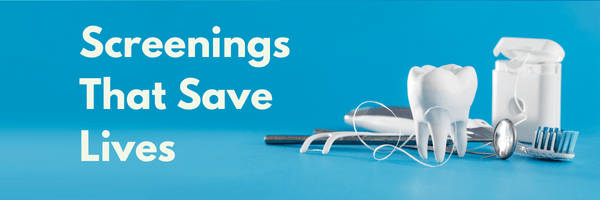
The Dentist Dilemma: Addressing America’s Growing Shortage
Posted October 10, 2024
As of March 31, 2025, HRSA reports there are 7,054 Dental Health Professional Shortage Areas (HPSAs) across the U.S., impacting approximately 59.7 million people HRSA Data.
To eliminate these shortage designations, an estimated 10,143 additional dental practitioners are needed. HRSA Data
Let’s delve into the current status, implications, and steps taken to address this issue.
The Scope of the Shortage
The lack of dentists in the U.S. is a serious issue, especially in rural and underserved areas. HRSA’s data shows a clear disparity in dental care access, with some regions facing significant challenges. This shortage means longer waits for appointments, less preventive care, and poorer oral health overall.
Regions with the Highest Dental Shortages (2025)
HRSA State-Level Data (Dental HPSAs)
According to HRSA’s March 31, 2025 data:
- California has 529 dental HPSAs, requiring approximately 427 more practitioners to eliminate the shortage.
- Texas: 264 dental HPSAs, needing another 378 doctors to meet demand.
- Florida: 274 dental HPSAs, requiring 1,259 more dentists.
- Missouri: 321 dental HPSAs, with a shortfall of 334 practitioners.
- Alaska: 339 dental HPSAs, needing 59 additional dentists.
HRSA DataDentalPostAGDAMN Healthcare
Southern U.S. (Region 4 – HRSA Designated Counties)
In HRSA’s Region 4, which includes Southern states:
- Georgia: 184 dental HPSAs, needing 411 dentists.
- Tennessee: 143 HPSAs, short by 314 providers.
- Mississippi: 148 HPSAs, short by 178 dentists.
HRSA Data
Summary Table (2025)
| State / Region | Dental HPSAs | Dentists Needed |
|---|---|---|
| California | 529 | ~427 |
| Texas | 264 | ~378 |
| Florida | 274 | ~1,259 |
| Missouri | 321 | ~334 |
| Alaska | 339 | ~59 |
| Georgia (Region 4) | 184 | ~411 |
| Tennessee (Region 4) | 143 | ~314 |
| Mississippi (Region 4) | 148 | ~178 |
Key Takeaways
- California leads the nation in both the number of dental HPSAs and total number of additional dentists needed to fill gaps.
- Florida has the highest shortfall in dentists needed—over 1,200—to end its HPSA designations.
- Regional disparities are acute in the South, with Georgia, Tennessee, and Mississippi facing severe staffing gaps.
- Rural and underserved areas remain disproportionately affected, highlighting the need for targeted solutions like loan repayment programs, expanded training pathways, and support for practitioners in under-resourced zones.
Efforts to Mitigate the U.S. Dental Provider Shortage (2025)
1. Increasing Dental Education Capacity
New dental schools are opening, particularly in underserved regions to boost workforce supply:
- Bitonte College of Dentistry at NEOMED (Ohio) — Opening in fall 2025 to train dentists for underserved Northeast Ohio communities. NEOMED
- Dental school at Pacific Northwest University (Washington) — Launching fall 2025 with a focus on rural and underserved populations. Delta Dental Institute
- Additional planned institutions include ones in Arkansas, Kentucky, and Washington for 2025. Becker’s Dental Review
2. Loan Repayment & Incentive Programs
HRSA’s Bureau of Health Workforce funds scholarships and loan-forgiveness opportunities to place dentists in shortage areas. About 8,000 students graduate annually from HRSA-supported programs, with one-third serving in underserved communities. Wikipedia
These strategies continue to be a cornerstone in encouraging clinician placement where they’re needed most.
3. Expanded Scope of Practice
Dental Hygienists & Therapists can now deliver more services in many areas:
- Dental therapists now practice in 13 states, including Alaska, Minnesota, and Oregon, alleviating access issues. Wikipedia
- ADHA advocates for workforce flexibility by enabling hygienists to take on preventive and restorative roles, especially in underserved settings. ADHA
- AAPHD (2025) highlights how expanding hygienists’ scope—and implementing direct access models—improves rural service delivery. AAPHD
4. Interstate Licensing: The Dental Compact
The Dentist and Dental Hygienist Compact (2025) allows licensed practitioners to practice across state lines more easily. Currently enacted in 10 states, the compact facilitates locum tenens and rapid deployment in shortage zones. Barton Associates
This regulatory change enhances workforce mobility where it matters most.
5. Telehealth & Workforce Innovation
Telehealth and mobile service models—especially for Medicaid and rural populations—are increasingly being adopted to overcome access gaps. While research highlights telehealth’s effectiveness with underserved communities, tele-dentistry uptake is growing though not yet widely standardized. arXiv
Meanwhile, localized workforce programs are making waves:
In Wallingford, CT, an adult education center offers affordable dental assistant training (~$2K), which includes externships and has successfully placed graduates in local clinics. CT Insider
Summary of Current Strategies in 2025
| Strategy | Details & Examples |
|---|---|
| New Dental Schools | Bitonte (OH), PNWU (WA), plus other planned institutions |
| Loan Repayment Incentives | HRSA-supported programs placing dentists in underserved areas |
| Expanded Practice Roles | Dental therapists in 13 states; hygienists providing more services |
| Interstate Compact | Greater professional mobility via the Dental & Hygienist Compact (10 participating states) |
| Telehealth & Community Programs | Tele-dentistry expansion; entry-level training programs for local recruitment |
Increasing Dental School Enrollment
The dental community is actively promoting various strategies to boost enrollment and diversity in dental schools:
- Increasing Diversity in Dentistry: Programs like the University at Buffalo School of Dental Medicine and the Increasing Diversity in Dentistry (IDID) Pipeline program, SMDEP, and ADEA pipeline programs encourage students from underrepresented communities to pursue dentistry.
- Outreach Programs: Targeting K-12 students, these initiatives aim to inspire future dental professionals, focusing on underrepresented and underserved communities.
- Financial Incentives and Support: Scholarships, grants, and loan repayment programs help overcome financial barriers to dental education.
- Expanding Dental School Capacity: New dental schools and increased class sizes in existing schools are helping to meet growing demands.
New & Recent U.S. Dental Schools
Recently Opened Institutions
- California Northstate University College of Dental Medicine – Located in Elk Grove, California, this dental school opened in 2023, expanding dental training capacity in Northern California. Reddit+1
- Bitonte College of Dentistry (Northeast Ohio Medical University) – Approved in 2022, anticipated to welcome its inaugural class in August 2025 in Rootstown, Ohio. Wikipedia
Planned or In-Progress Institutions
- Florida Atlantic University College of Dentistry – In development at FAU’s Boca Raton campus. Expected to open around 2025, pending final approvals and funding. Becker’s Dental Review+1The Capitolist
- Lyon College School of Dental Medicine (Little Rock, Arkansas) – Approved and expected to enroll its first students between 2024–2025. Becker’s Dental Review
- University of Pikeville (Kentucky) – Received funding to launch a dental school serving Appalachia; initial classes planned for 2025. Becker’s Dental Review
- Lincoln Memorial University College of Dental Medicine (Knoxville, TN) – Opened in 2023, becoming Tennessee’s third dental school. Becker’s Dental Review
- Pacific Northwest University of Health Sciences College of Dental Medicine (Yakima, WA) – Targeting Fall 2025 for its first cohort, with a focus on serving rural and underserved communities. Becker’s Dental Review
Established Schools (Previously Opened)
- University of New England College of Dental Medicine – Opened in 2013 in Portland, Maine. Reddit
- University of Utah School of Dentistry – Established in 2013 in Salt Lake City, Utah. Reddit
- Touro College of Dental Medicine – Opened in 2016 in Hawthorne, New York. Wikipedia
- LECOM School of Dental Medicine – Opened in 2012 in Bradenton, Florida, with its inaugural class welcomed in July of that year. LECOMYour ObserverLECOM 25
- Roseman University College of Dental Medicine – Opened in 2011 in South Jordan, Utah. Reddit
- Midwestern University College of Dental Medicine–Arizona – Opened in 2008 in Glendale, Arizona. Reddit
- University of Texas Health Science Center at Houston School of Dentistry – Opened in 2012. Reddit
Summary Table: Newest Dental School Openings in the U.S.
| School & Location | Year Opened / Opening Timeline |
|---|---|
| California Northstate University (CA) | 2023 |
| Bitonte College of Dentistry (NEOMED, OH) | Opening 2025 |
| FAU College of Dentistry (FL) | Planned: 2025 |
| Lyon College (Little Rock, AR) | Expected: 2024–2025 |
| University of Pikeville (Appalachia, KY) | Expected: 2025 |
| Lincoln Memorial University (Knoxville, TN) | Opened 2023 |
| Pacific Northwest University (Yakima, WA) | Opening Fall 2025 |
| UNE (Portland, ME) | Opened 2013 |
| University of Utah | Opened 2013 |
| Touro College of Dental Medicine (NY) | Opened 2016 |
| LECOM (Bradenton, FL) | Opened 2012 |
| Roseman University (UT) | Opened 2011 |
| Midwestern University (Glendale, AZ) | Opened 2008 |
| UTHealth Houston School of Dentistry (TX) | Opened 2012 |
What Does the Future Hold?
Addressing the U.S. dentist shortage will require a multifaceted approach. Current efforts from the ADA, federal and state governments, and healthcare organizations are focused on:
- Expanding Training Pipelines – With multiple new dental schools opening between 2023–2025, more graduates will be entering the workforce.
- Incentivizing Service in Underserved Areas – Programs like the National Health Service Corps (NHSC) and state-level loan repayment initiatives continue to encourage dentists to practice where they’re needed most.
- Leveraging Mid-Level Providers – Expanding the scope of dental hygienists and dental therapists can help close care gaps, particularly in rural and low-income communities.
- Technology & Telehealth Growth – Teledentistry and AI-driven diagnostic tools are making it easier to deliver preventive care, patient education, and remote consultations.
- Retention & Workforce Well-Being – Efforts are also being made to address burnout and improve career satisfaction, ensuring existing dental professionals remain in the field.
The Outlook: While challenges remain, the combination of new dental schools, innovative workforce solutions, and evolving technology is expected to gradually improve access to oral healthcare. If these initiatives continue, the future of dentistry looks brighter — with better distribution of providers and stronger support for both patients and practitioners.
We connect and educate more than 900,000 job seekers in the U.S. and Canada to build better places to work through teams that excel.





.png)


